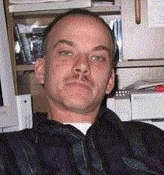1⁄35Pacific Corsair
Weathering
The first 2 coats of Klear provide a smooth surface for the decals and protect the paint from the weathering process. The second 2, or more, level out the decals with the surface and protect them. For an aircraft operating in the Pacific theatre (and the Mediterranean/desert too) I like to fade the paint. This can be scary, but the Klear allows you to remove it if it's not successful. This fading needs to be done over everything that would be exposed to the elements. I use enamel medium sea grey, heavily thinned and build it up gradually and randomly, but with thought. This fading was done over the previously lightened fabric areas as well. There is a slight problem though, because the area of the markings that sits on the fabric areas needs to be faded more, to match in with the more faded fabric. To achieve this I masked off the white areas and around the outside of the Stars and Bars on the wings. To achieve this I cut 3 narrow triangles for each point of the star affected and overlapped them. To mask around the disc I cut out a circle, of the correct diameter, using a circle cutter (surprise). The blue was then faded with the medium sea grey mix.
When this fading is complete then another coat of Klear is required, to protect the fading, from the rest of the weathering process.
I then applied a wash. I use white spirit and artists oil paint. I never use straight black, much to harsh. I generally use warm grey; it has a brownish hue, darkened with just a little black. I leave the wash for several hours. I wipe the excess wash off, in the direction of the airflow. This is so that the wash leaves a slight tint. Using a minute amount of neat oil paint and dragging it back with the finger, a cloth or cotton bud, to represent oil and/or grease marks can enhance this.
When the wash is complete and dry then I spray on the matt coat, I prefer acrylic for this, dries quicker. There is one more aspect to the weathering process, paint chipping. For this I use an artists silver pencil. It will not "take" on a glossy surface, so it has to be done after the matt coat. The model is quite heavily chipped, because the aircraft operated from runways made from crushed coral, which is very abrasive. The chipped paint is difficult to see on the light camouflage colours, but is seen well on the propeller. I also "dragged" (sort of dry brushing but using more paint, to get streaks) medium sea grey over the front edges of the wings and nose. This was in an attempt to simulate the coral cutting the paint, but not yet wearing it away. Again it is almost impossible to see. Finally exhaust and cordite staining was applied using well-thinned Xtracolor X504 exhaust. The cordite staining from the cartridge ejection shutes was taken back onto the flaps. Behind the cowl flaps I added minute dabs of warm grey oil paint and dragged it back with a cotton bud. I also added staining from the circular plate on the top of the nose and on the drop tank. I also added fuel spillage from the tank filler. For this staining I used oil and fuel from Lifecolor Tensacrom II range.













